It always surprises me how many people don’t notice the plants along our highways. I can’t be the only one driving down the road remarking the excellent pairing of plants nature makes in the median strips. Of course a lot of people bemoan that we have a poor range of woody nitrogen fixers so perhaps they don’t realize our median strips are clogged with one of the best woody nitrogen fixers known. Please say you recognize the common name: autumn olive?
It’s as though this plant were invisible to the general public. It is in fact one of the few elite plants to hit high nitrogen fixer status. This category starts at 160 lbs N fixation per acre, and doesn’t even have an upper limit.
This is the first N-fixer in the series that is not a legume. It is actinorhizal. The reason being it doesn’t use Rhizobium bacteria to fix N; the whole group, made up almost entirely of woody trees, use a filamentous bacteria called Frankia, which has quite a high salt, water, and drought tolerance.
Combine this with an early leafing, and in general shade tolerant disposition of Eleagnus, and you have a specimen rugged and ready for any terrain.
In fact its ruggedness is what gave it the green card to emigrate from East Asia to Northern Europe and the US. We needed something that could rehabilitate strip mines -places where land is stripped of its soil hunk by hunk to get coal under it rather than building an underground mine.
I’m not sure how widespread the practice is, but I have a lot of it around me -mostly done 50 years ago. Even today after rehabilitation, many of these sites look like a scene of Mordor (in fact many movies are made in strip mines for that affect) with grey and black rock and coal, and orange clay. Often there are huge ravines left that were used as personal dumps. Then most springs in them are some variety of toxic –either gray or orange red water.
So if this gives you a picture of what Eleagnus was brought to America to live in, and that it thrived in, you get my meaning for rugged.
Obviously any food forest where fruit trees are expected to grow will be a walk in the park for Eleagnus. All the better because it is a fruiting shrub.
I remember the expression on my friend’s face when I first introduced him to the shrub. He was at first wary of eating off a random bush in the middle of a half wild field, but once he tasted the berries his face lit up with surprise and copiously praised them saying they would be amazing in a salad.
I completely agree. The flavor to me is like a tart apple, although it has a more intense sweetness than any apple I’ve tasted. Some species like E. multiflora, commonly known as Goumi in Japan, naturally has much larger fruit, and about the same flavor I’m told. There are several varieties of E. umbellata bred-up for size and flavor, such as ‘Ruby, and ‘Amber,’ which I have; although I haven’t been able to taste any yet to say how much better they are.
A more sensuous experience Eleagnus has to offer are its flowers. I love their scent-and others do too; one woman said she’d pay me if I could dig her a wild bush to smell in her yard. It lands somewhere between a floral and a gourmand in terms of perfume, being a vanilla spice scent. Thick as it is, I’ve caught the scent wafting down wind a whole fifty feet from the plant.
As for its form, it’s highly variable. In wandering strip mines I’ve seen some with six inch single trunks that are more fitting as trees stretching for the upper story, and shrubs with dense canes coming up from the base as a thick bush. Coppicing in the sun will produce the latter effect, limbing up in shade the former.
Limbing up in shade is one place Eleagnus does very well because it can take shade and still produce a decent amount of N for the space it takes. For the most nitrogen and fruit though, it’s better to let them get sun in the overstory, or have some sun in the understory where you can pick them.
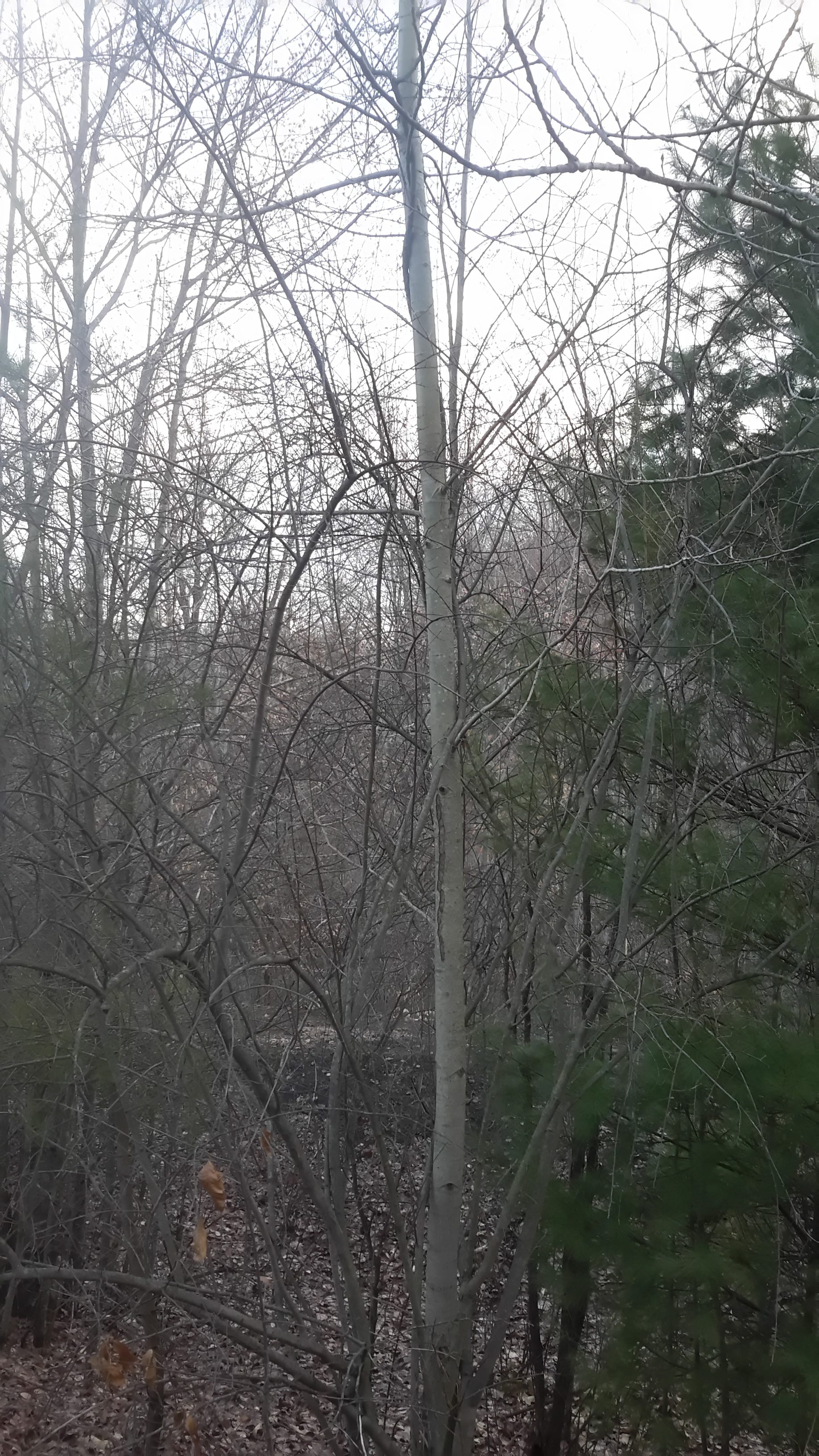
So after all that, I just hope you don’t get into any wrecks studying your new found highway inhabitant. Perhaps it’s better to study them in your food forest. They’re far more productive that way.



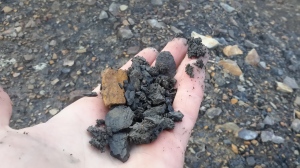
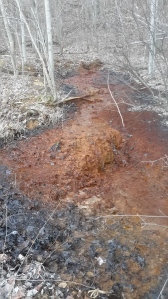
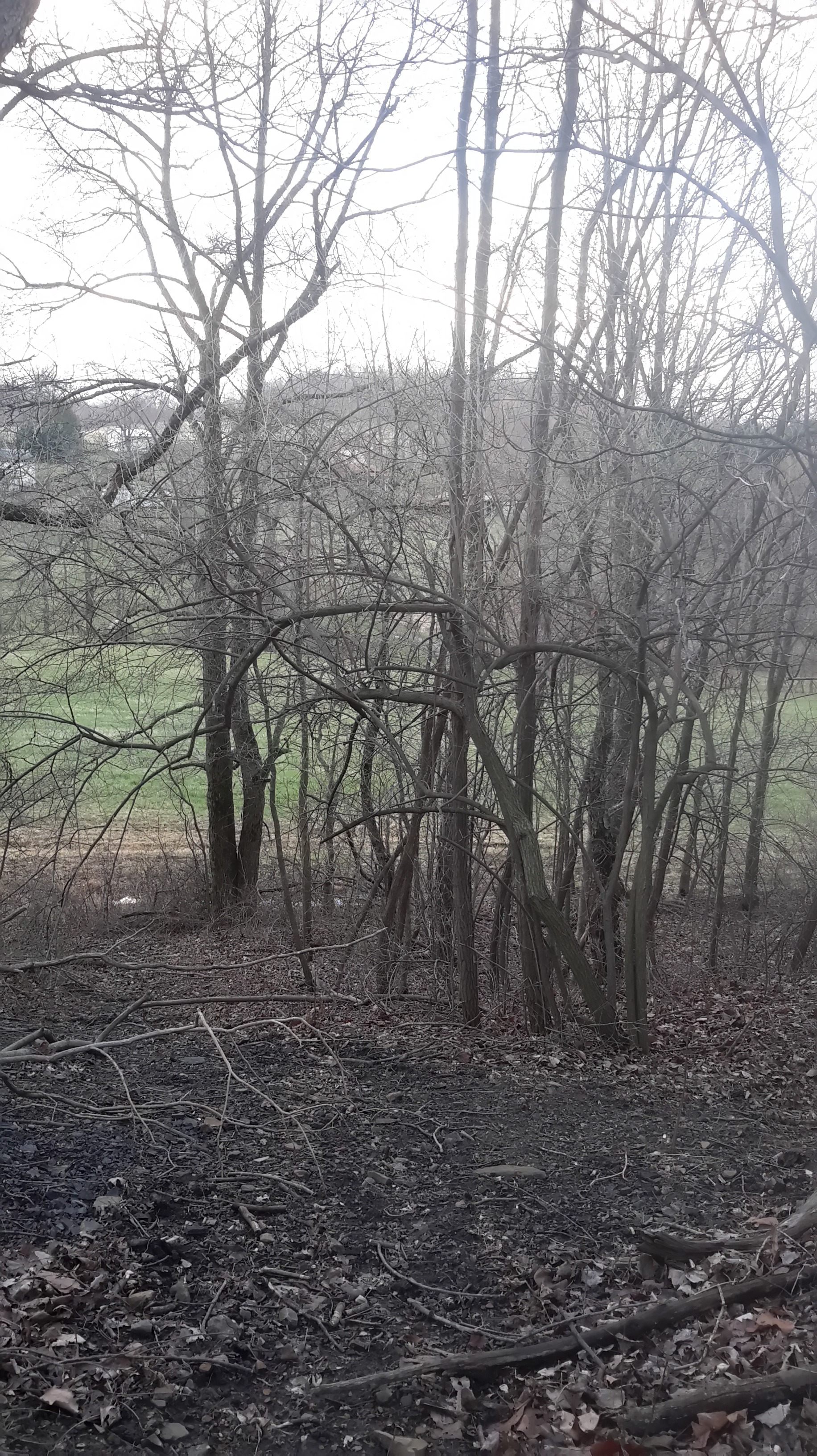

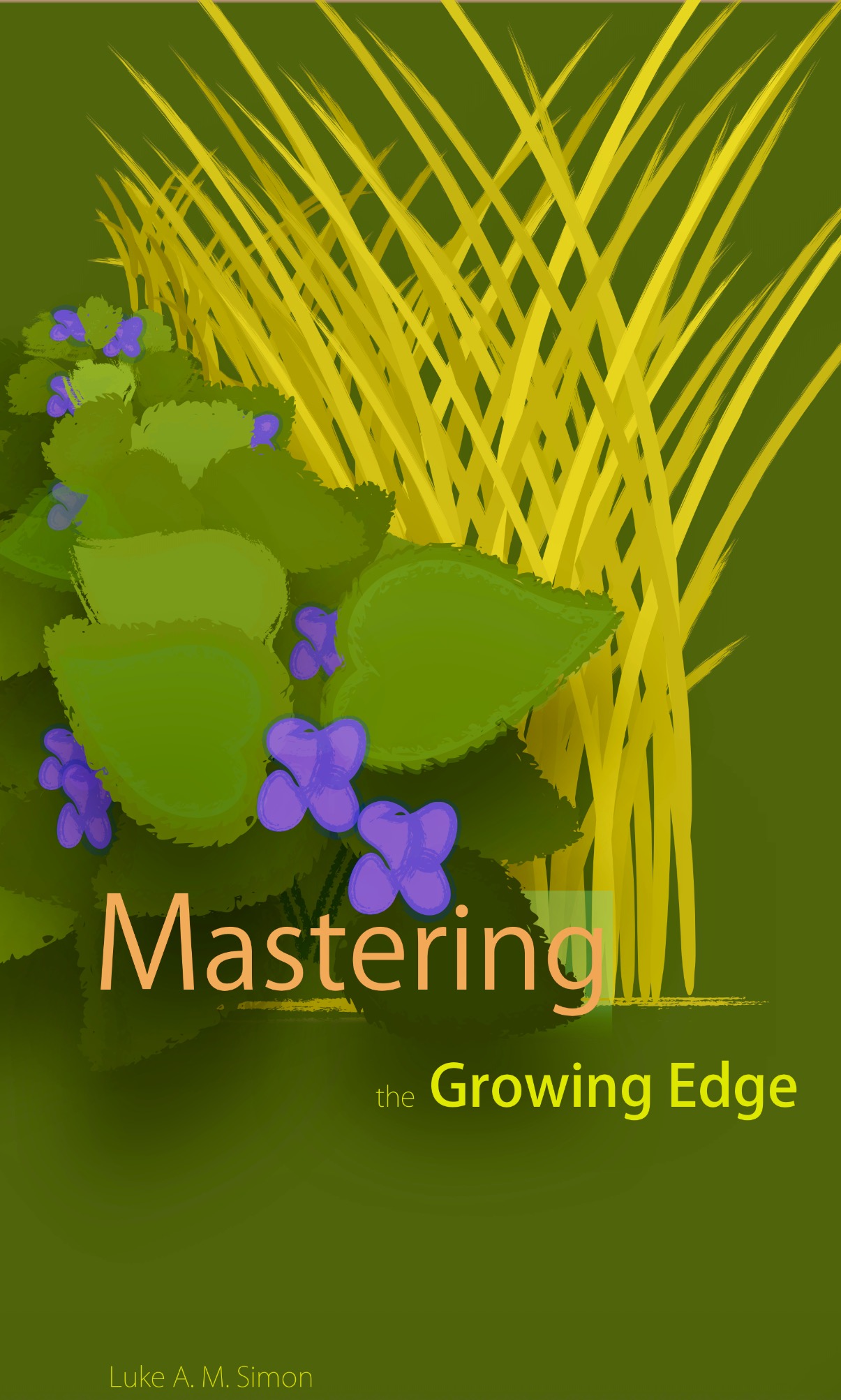
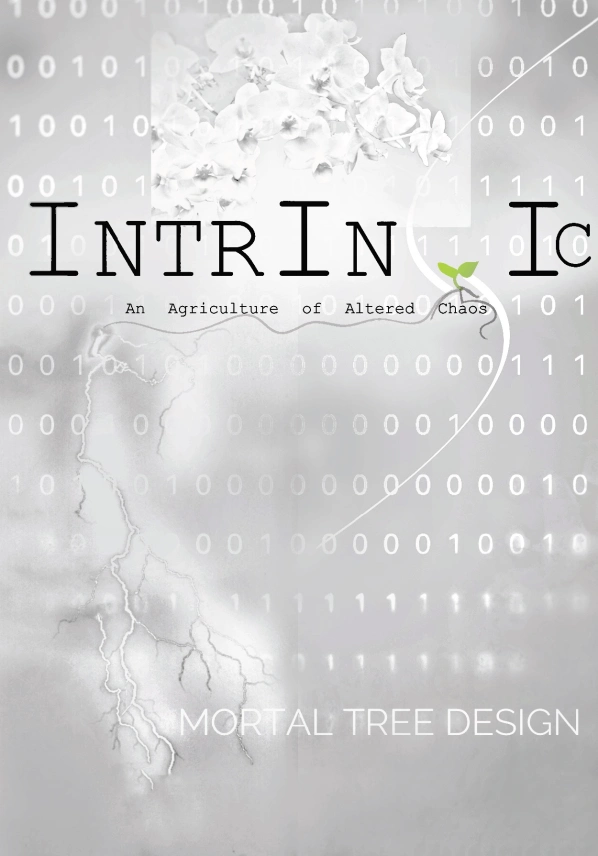
Another nice article, but I believe you paint a too-friendly picture of these scrubs. I was first introduced to Russian Olives when your grandmother ordered two as a privacy screen for the yard just outside my bedroom window as a young teen. She thought their silver gray leaves were beautiful, the berries were supposed to be delicious, they were wonderfully hardy, and she was interested in their nitrogen production too. I can remember her going on about what a wonderful addition they would be to our yard. They grew quickly enough, but yours truly had to mow beneath them all summer. (Did you forget to mention they have woody thorns about an inch or so in length?) We never did get to eat any berries, the thorns made sure of that. And besides, the berries were so small, much smaller than the average blueberry. It just wasn’t worth the battle. And as I would drift off to sleep in the early summers, still smarting from the scratches, the scent would fill the room so thickly! I don’t remember it as “pleasant”. It was like getting stuck sitting next to an old lady at church who had overdone the perfume that evening. – Suffocation! I was more than a little bitter about mowing under those vicious branches all those years. So it was a bright, triumphant day when I, as an adult coming home from college, waged the final, thorny war on the nasty things and drug them to the burn pile! To be fair, they do have their place. Russian olives perform famously as hardy windbreaks out in the flat midwest plains, and I have made peace with the ones in our fencerows. They are far enough away from the house that I do enjoy their scent, and who can argue with nitrogen fixation and food for the wildlife? Most significantly, I am now safe, high up in the tractor at mowing time. Sincerely, The Mother.
LikeLike
I have long admired the look of Russian Olive along the highways and by ways, but many plants of it have invaded my acreage, bird poop propagated. There were none here 30 years ago. They may have a place for some, I classify them with multiflora rose affliction. My husband thought maybe I wanted them so avoided mowing, he is now instructed to eliminate what he can with our excess multiflora rose plants.
The Wilds, a former strip mine, now animal preserve and research center of approximately 10,000 acres near Cambridge ,Ohio, is now eradicating Russian Olive that was planted by the coal company for restoration of the soil. Too much of a good thing apparently. The Wilds is a wonderful place to see bison, rhino, cheetah, wild Asian horses, wild African dogs, rare breeds of cattle, goats, antelope, and giraffe. See their website for all the neat tours and activities.
Hoping to taste some of Boy Wonder of the Food Forest Luke’s Eleagnus hybridized fruit.
LikeLike
And I believe you paint an exceptionally poor one. The thorns, which not all the plants have, especially the bred-up ones, aren’t very sharp, they’re more like twigs nipped off, which can scrape, but they’re not razor sharp javelins by any means. They have certainly never kept me from grabbing handfuls of the berries to eat. I’m afraid I just can’t sympathize with your apathy for the scent. I’ll stick my face into the flowers and only want more. Thank you though, Mother for informing my readers that some people don’t jive with the plant as well as others. Opinions matter.
LikeLike
Well, yes, they have made themselves at home away from home. All the more reason to subject them to heavy pruning and harvest the delicious fruit so the birds can’t spread them around. The seeds actually contain a lot of the berries total nutrients anyway. I will make sure you get some of the berries this fall, as my bred up plants are putting out a fair number of flowers now.
LikeLike
That is neighborly of you Luke to offer fruit, one taste might be more than enough.
LKB/The Neighbor.
LikeLike
There may be a misunderstanding here… Umbellata are not Russian olive. That’s angustifolia. Umbellata is Autumn olive. They are less spiny, less strongly scented and have a far better tasting fruit than angustifolia (also they are red vs. Russian’s yellowish). And then there’s also Goumi (multiflora).
It’s umbellata that has the named cultivars – the ones you mentioned plus Hidden springs, Big red, Sweet’n’tart etc. Really good tasting berries. They smell like tomato sauce when cooked for juice / jam. Here’s a photo of a nicely loaded bush, this year’s was the first serious crop – http://shrani.si/f/3n/N4/17t1EP0b/1/img0749.jpg
LikeLiked by 1 person
Fantastic fruit there. I haven’t updated this page yet, but I tasted some of the bred up berries and found them much more soft, juicy, and later by several weeks. I also noticed they tend to fruit closer to the main stem like yours pictured. So I’m curious what the variety is and if you’ve found the same?
I appreciate you pointing out the discrepancy in common name. As to whether or not it is a misunderstanding, you could call it that. I have had this conversation with someone before, although you’ve gone a good bit further by stating the differences;and you’re right. I’ll remedy that in short order.
I hope you’ll understand my position if I share my opinion that the legitimacy of any name not in botanical Latin or Greek is untenable. Even then botanists arguing over correct classifications, and the introduction of gene sequencing, has moved botanical names around producing that miserable creature the synonym.
I am always pleased to entertain a well educated argument such as your own for a consensus of common names, so please don’t hesitate to do the same with anything else you catch on this blog. What are your thoughts on that point? I’d be interested in your opinion.
LikeLike
Also, here are some ideas on how to use the berries… http://www.ediblenetwork.com/wp-content/blogs.dir/8/files/images/pdfs/fall08/beansAnAutumn.pdf
LikeLiked by 1 person
Common names are often a mess. Even the Latin names are sometimes confusing and prone to change as you pointed out.
However, In my experience it is the angustifolia that have an overpowering scent, so-so-fruit, quite silvery leaves and are seriously spiny – but the umbellata distinctly not so. Very different shrubs. So I thought, hey, this is not a case of a rose by any other name, people really are talking about different species under the elaeagnus umbrella here.
Ours are named cultivars. Growing in zone 6, Hidden springs (in the photo) fruited in mid-September. Big red and Sweet-n-tart looked ready but the astringency persisted much longer; they achieved the same level of taste in mid- and end-October. By that time the birds have also figured out that something new was on the menu so another bush of Hidden springs, left untouched as an experiment, was stripped in a couple of days while I was away.
I’ve used them to prove their pioneer-plant mettle by planting them on ground that has previously been under a building so it’s severly compacted. Also, it’s clay and highly exposed to wind and sun. The one element of help they got was mulch of clipped grass in a 3-foot radius, 2 to 4 inches high.They did everything by the book.
The berries appear close to the branches as you say. And they are so easy to pick. They jump off the branch soon as you look at them. A world of difference from seaberrry as the opposite example.
So this is a plant that…
– likes difficult locations
– grows quickly
– fixes nitrogen
– is not attractive to pests and diseases
– can serve as a windbreak
– has wood of good burning quality
– presumably tolerates juglone (haven’t tested that one out yet, it’s a long term experiment but I’ve planted it in another place as a buffer between walnut and apple trees)
– is quick to bear fruit
– in great quantities
– which is laughably easy to pick
– the flowers have a nice smell
– and are attractive to bees.
It’s just the “best value” shrub/tree that I currently know of.
LikeLike
Yes, I think some people were confused about which I was talking about. I’ve noticed umbellata is pretty much free of spines to name one characteristic people harped on most. Around here the two common names are used interchangeably so I’ve always tried to suggest a difference by citing the species names.
I’m quite intrigued by your experiment. Now that you’ve had success with the Eleagnus, are you planning on coppicing your plants for mulch then bringing in other plants?
LikeLike
The berries are very tasty to me, they are like small sour cherries, so it seems a waste cutting the bushes down already – I’ll let the 4 remaining plants from the subsequent year’s planting grow up and then consider what to do with the first generation.
The main goal was to create a more inviting environment for other plants: enliven the soil – make it less compact with possibly also a nitrogen boost – and tone down extremes of sun and wind. Currently I’ve got crimson clover growing in the space the bushes enclose.
In my experience CC is great for enriching the soil and loosening it up. It usually overwinters fine and in May it will provide forage for bees. Only a bit in this experimental area but we’ve got a 1,5-acre field of it on the other side of the property.
When the area becomes hospitable enough I’ll probably put in currants and gooseberries. We’re big on all kind of berries. Low-growing rosa rugosa and lavender in front of elaeagnus on the south side. Some buddleia bushes as supporting players. And a bench for sitting in the middle of it all and enjoying a snack off the branch. I’m aiming, as always, for a setup that combines the edible, bees, butterflies and scent effects.
The other experiment is elaeagnus and hazel as a buffer between walnut and juglone-sensitive trees, especially apple. But it will take at least 7-10 years, in my opinion, to even begin having and idea of how things are going since – from what I’ve read – walnuts do not just start massively spreading juglone from day 0.
The walnuts are going to be modern lateral-bearing French varieties Fernor and Fernette; the apple trees are old cultivars from the Austro-Hungarian times on seedling rootstock. They are all full size trees and will in time become somewhat crowded (planting distance 7-8 yards) so if there really is a beneficial effect of E. and hazel in such a situation they will have to work hard to prove it.
LikeLike
Love the website you linked to. I’ll definitely be reading more there.
Definitely check out the pdf. I have linked in my post “Walnut suitable crops” if you haven’t already. It addresses juglone accumulation over time.
Your plan for the reclamation site sounds fantastic. With Eleagnus and CC already having made a nice niche for you I’m sure the fruiting plants will grow twice as fast. Thanks for telling me about it.
LikeLike
Here’s the elaeagnus / walnut thing: http://gabrielhemery.com/2010/09/28/a-walnut-trees-best-friend/ – “… In the forestry trials I established across four sites in England in 2000 the shrub has been shown to increase walnut survival and growth, and there has been no sign of invasiveness.”
LikeLiked by 1 person
Yes, I’m familiar with that PDF… In fact I’ve once made (and fulfilled) a foolhardy promise to translate it into Slovenian language, judging only from the title and not being aware of its size 🙂 That’s why I’m saying that the buildup and effect of juglone is a slow process.
LikeLike
Well sheesh if you’ve translated the thing into another language what am I doing telling you about it! Impressive to hear you did that.
LikeLike
Hey… So 3? 4? years ago I planted an umbellata 1 m from a Rajka apple on MM106 (middle size) rootstock as a juglone protector from a laaaarge walnut which is some 8 m away from it.
Before planting the elaeagnus, the apple tree had been growing for 5 years and reached what I believed to be its ultimate height of about 3 m. It definitely didn’t show any signs of being in a hurry to continue growing.
The umbellata has since grown to a 2 m x 2 m bush and during this time, especially in the last 2 years, the apple tree has gained an additional 1,5 m which was a big surprise.
Now, this is a sample of one, so we can’t really talk statistics. But hey. Great!
LikeLike
… Encouraged by this excellent experience I have recently added a young umbelata (last fall’s cutting) to newly planted walnut (Fernor) and sweet cherry (Sunburst) trees.
Since the bees seem to enjoy elaeagnus and I have plenty of them from cuttings I’ll just continue to plant them with all the young trees. Our e. are named cultivars. Can’t say no to the fruit.
LikeLike
I really think the benefit of nitrogen fixers is underestimated by most people. Perhaps it is the improved health of the soil that is moderating the juglone effect? Higher organic matter seems to buffer everything else, and the allelopath is created in lesser quantity when the soil is good I’m told. Thanks for letting me know. This is fascinating.
WordPress had me approve your comment because of the new username, and I noticed you have a site. I’m following. Might seem a bit risky considering you might not plan on posting about plants, but I figure other things from you would probably be interesting, whatever the topic. I have thought several times it would be great if you had a site to share your projects and findings. They are definitely worthy of their own site. I certainly don’t mind hoarding them on my site as comments, but I doubt many people look there anyway. I eagerly anticipate whatever you decide to post.
I am exceedingly envious that you got cuttings from your eleagnus. I have tried on several occasions at different times of year to do this, and as of yet, have had no success. I may try the air layering that was so successful with the fig.
LikeLike
You know… I was meaning to start writing about plants and animals. Those are the subject that I love, I also have writing experience and tech is not a problem. But somehow this “I’ve been meaning to” phase has been going on for 7 years now 🙂 So no promises.
Don’t really know why that is. Possibly because somewhat unusual episodes that could maybe really benefit someone are relatively rare and I’m swamped daily by how much stuff, often copy-pasted ad nauseam, there already is; and also how divided my attention and schedule are.
Your site is definitely an outlier in this regard, in my eyes anyway, but I don’t know many about which I can say that and again, at our place, things that are somewhat off the beaten path just don’t happen that often.
As to cuttings, just make a lot and don’t let them be too thin. Make 100 pencil-width cuttings in september, rub everything off except the top 2-3 leaves, scrape the bark for an inch or two a the bottom, then stick them in large pots to make it easier to keep an eye on them / keep them out of harm’s way. I’d say half of them will make in through and half of that will be good strong ones.
That has been my experience with umbellata and also (limited sample) multiflora. Then again, this topic started with the fact that there is often some name confusion in the elaeagnus family. I haven’t yet tried with angustifolia since their fruit can’t really compare. Maybe those are not so willing to grow.
LikeLike
Oh, sorry – I see that what you refer to as my site is the WordPress.com site I needed to create in order to open an account and create a Gravatar. It’s a byproduct of this process.
Then again, once upon a time I’ve read an enjoyable book (I think it was one in the Maisie Dobbs series) that contained this quote: coincidence is the messenger of truth. So maybe that’s the universe’s way of dropping a hint that it’s time to get started. I’ll ponder that, hopefully not for 7 more years 🙂
LikeLike
I for one would probably be quite interested in the happenings at your place -whether off the beaten path or not. Until then, I am patiently waiting.
I will follow your recommendations for the cuttings. My attempts have been similar, removing the leaves and scraping the bark, but I haven’t tried many at once. Trying in September is new too.
Sent from my iPad
>
LikeLike
Hey… The season begins 🙂
In case the above doesn’t work, here’s a link to some of this year’s photos – not being very dilligent about this, just what happened to get in there. https://www.dropbox.com/sh/vslqthu6l3b3qry/AAB1JocuPYHN6QLwGDZMs0M8a?dl=0
LikeLike
The thing to note here is that since we’re seeing berries ripening, the flowers have survived the late-April frost that wiped out all the tree fruit. So adding “frost hardy flowers” to the list of elaeagnus awesomeness.
LikeLike
That is an excellent point. I can’t think of any year the Eleagnus haven’t fruited but many that peaches, or apples, or cherries have given nothing or at least knocked back due to harsh conditions. We’re at about the same stage of ripening for our Eleagnus. I looked through the other pictures in your dropbox. It looks fantastic. The paulownia seedling looks like the one I saw down the road that’s now three years old and fifteen feet tall by ten wide just as a warning. Glad to see you’re keeping some bees alive and swarming. Thanks for the update.
Sent from my iPad
>
LikeLike
As far as I’m aware, there aren’t any such nitrogen fixers on the land where the pit head of our (now closed) local mine is. I will have to keep my eyes open – am intrigued that there provenance is perhaps Northern Europe.
LikeLike
Here is a website with a map of its (general) current whereabouts:
http://www.cabi.org/isc/datasheet/20728 They cite northern Europe as having it but don’t give exact info.
LikeLike
Well, the black dot on the map of England isn’t too far away from where I live but of course that doesn’t mean it is local. Could be anywhere within 50-100 miles of me!
LikeLike
I have the same problem wih plants like Amorpha fruticosa and pawpaw. The USDA map tells me they’re native to my area, but I have never, even while traveling, found a patch or single plant. Let me know if you find any.
LikeLike
Will do!
LikeLiked by 1 person